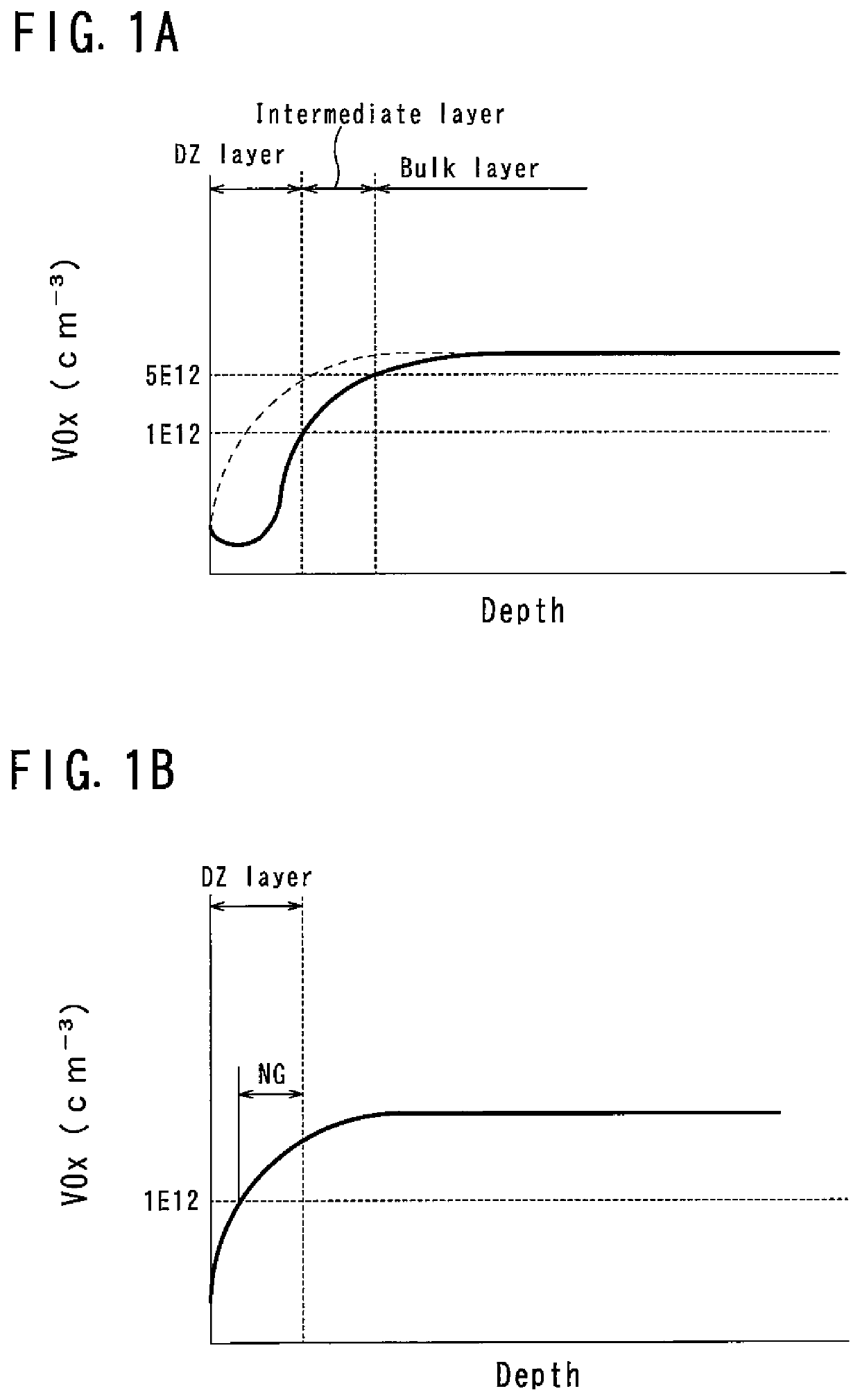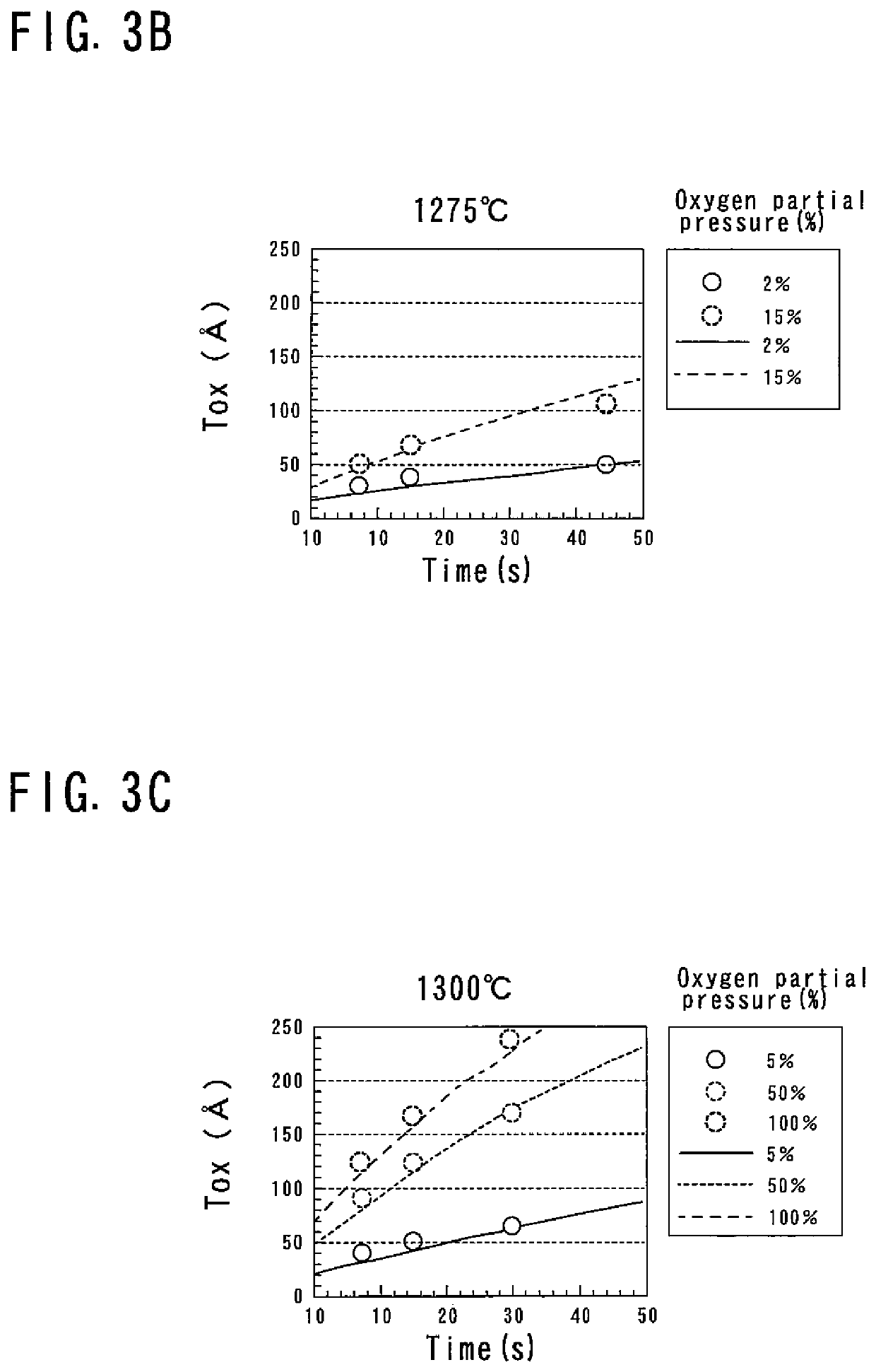Thermal processing method for silicon wafer
- Summary
- Abstract
- Description
- Claims
- Application Information
AI Technical Summary
Benefits of technology
Problems solved by technology
Method used
Image
Examples
Embodiment Construction
[0054]A thermal processing method for a silicon wafer (wafer) according to the present invention is a method for performing rapid thermal processing (RTP) by using a ramp annealing furnace capable of rapidly increasing and decreasing temperature in an oxygen atmosphere (oxygen partial pressure is in the range of 1% or more and 100% or less) and for introducing vacancy oxygen complexes (VOx), which are complexes of vacancies and oxygen, into the wafer. As the wafer for thermal processing, a wafer sliced from an ingot grown by the Czochralski method (hereinafter referred to as CZ method) and mirror polished on both sides thereof is used.
[0055]As the RTP thermal processing, for example, a sequence shown in FIG. 2 is employed. In this sequence, the temperature is raised at a predetermined ramp up rate Ru from a predetermined temperature T0 (for example, 700° C.) to a processing temperature TS, and is held for a predetermined time (for example, 15 seconds) at the processing temperature T...
PUM
 Login to View More
Login to View More Abstract
Description
Claims
Application Information
 Login to View More
Login to View More - R&D
- Intellectual Property
- Life Sciences
- Materials
- Tech Scout
- Unparalleled Data Quality
- Higher Quality Content
- 60% Fewer Hallucinations
Browse by: Latest US Patents, China's latest patents, Technical Efficacy Thesaurus, Application Domain, Technology Topic, Popular Technical Reports.
© 2025 PatSnap. All rights reserved.Legal|Privacy policy|Modern Slavery Act Transparency Statement|Sitemap|About US| Contact US: help@patsnap.com



